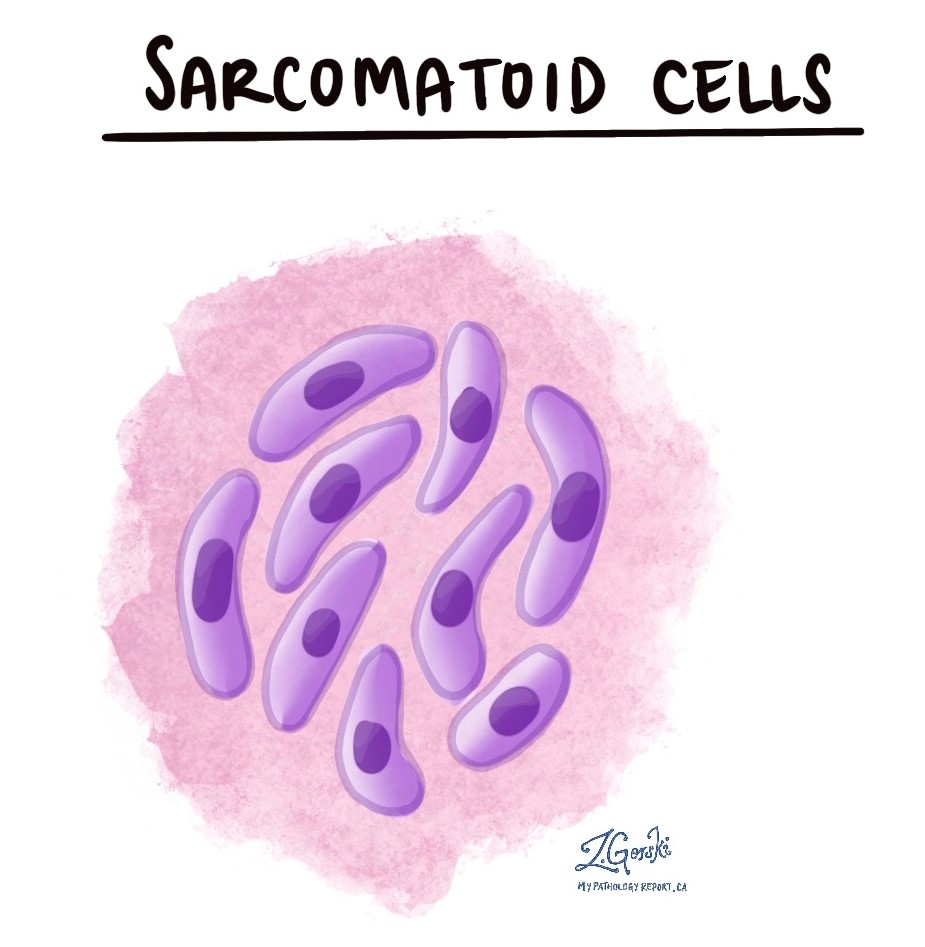The term “sarcomatoid” describes cancer cells that resemble those typically found in sarcomas. Sarcomas are cancers that develop from connective tissues like bones, muscles, fat, or blood vessels. Sarcomatoid cells are long, thin, and have pointed ends, giving them a spindle-shaped appearance. Pathologists often use the term sarcomatoid to indicate that these cells have a similar shape and appearance to sarcoma cells, even though they are not true sarcoma cells.
Is sarcomatoid a type of cancer?
“Sarcomatoid” itself is not a specific type of cancer or a diagnosis. Instead, it is a descriptive term used to characterize the appearance of particular cancer cells under the microscope. Sarcomatoid cells typically appear in other types of cancer known as carcinomas, which originate from epithelial cells lining organs and surfaces throughout the body. Examples of carcinomas that can show sarcomatoid features include cancers of the lungs, kidneys, bladder, and other organs.
What does it mean if a cancer is sarcomatoid?
If a cancer is described as sarcomatoid, the tumour contains cells that look like those typically seen in sarcomas. This indicates that the cancer cells have changed significantly, losing their normal structure and organization. Because of this, sarcomatoid tumours can be more difficult to diagnose accurately, often requiring additional specialized tests. Identifying sarcomatoid features in a cancer can influence how doctors manage the disease and guide the choice of treatments.
Are sarcomatoid cancers more aggressive?
Yes, cancers that show sarcomatoid features tend to be more aggressive than those without these characteristics. Sarcomatoid cancers generally grow faster and spread more quickly, and can be harder to treat effectively. Due to their aggressive behavior, treatment often includes a combination of therapies such as surgery, chemotherapy, or radiation therapy. Understanding that a tumour has sarcomatoid features helps doctors predict its behavior and select the most effective treatments.




